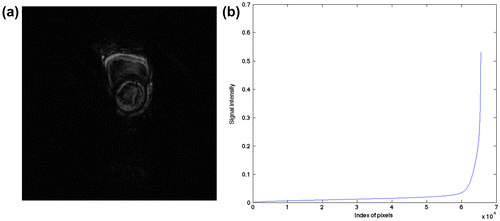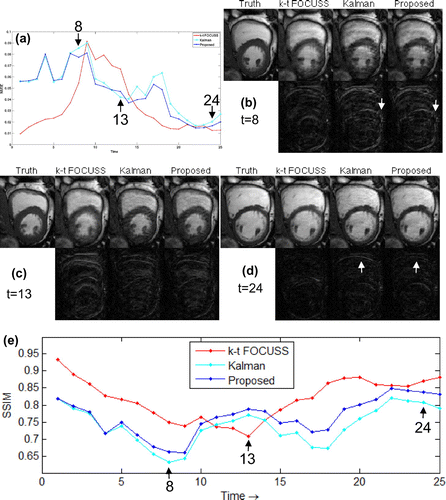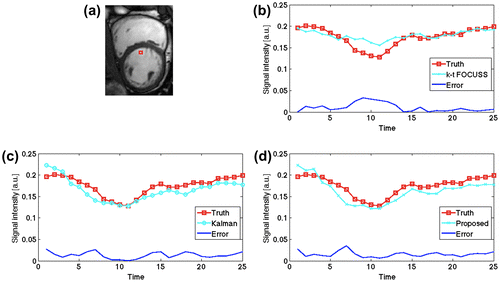Figures & data
Figure 1. The reconstruction of a 3D cine MRI can be broken into the reconstruction of multiple 2D x–t images along the read-out direction. The symbol ⊙ denotes element-wise multiplication.
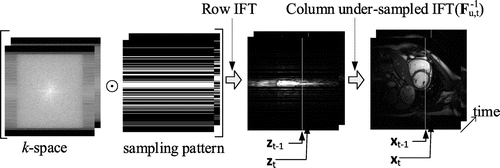
Figure 3. One frame of simulated phantom (a) with a rectangle ROI and the Gaussian random under-sampling pattern along phase-encoding direction (b).
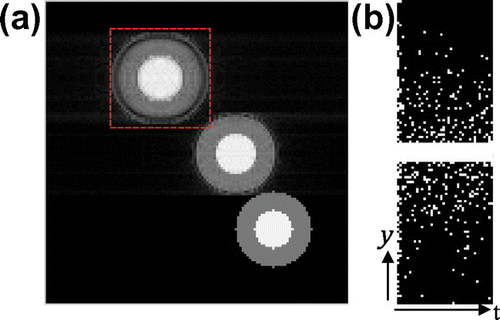
Figure 4. The dashed line in (a) shows one read-out position across the rapidly oscillating circle, (b) is the truth of the x–t space at the read-out position, and (c,d,e) is the recovered x–t space(left half) and their absolute error maps(right half) of the k-t FOCUSS, KF and proposed method.

Figure 5. The dashed line in (a) shows one read-out position across both the slowly oscillating and the stationary circles, (b) is the truth of the x–t space at the read-out position, and (c,d,e) are the recovered x–t space(left half) and their absolute error maps(right half) of k–t FOCUSS, KF and the proposed method.
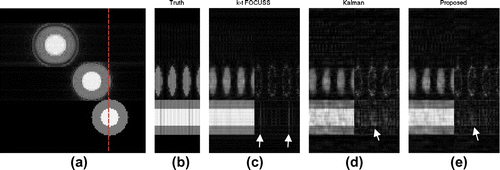
Figure 6. The NMSE of the area covering the rapidly oscillating circle (a) and the truth, recovered images and their error maps of k–t FOCUSS, KF and proposed method for frames 6(b), 14(c), 31(d), respectively.

Figure 7. One frame of cardiac cine (a) with a rectangle ROI and the Gaussian random under-sampling pattern (b).
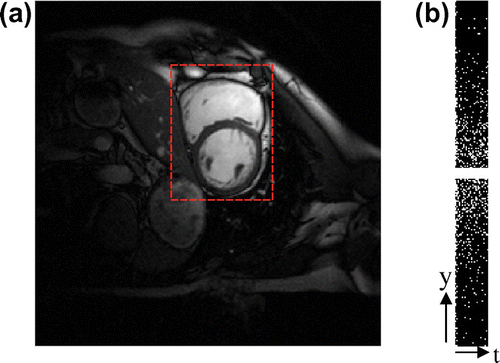
Figure 8. (a) shows one read-out position across area of rapid cardiac deformation and (b) is the ground truth of the x–t space at the read-out position,(c,d,e) show the recovered x–t space and their error maps of the three methods.


